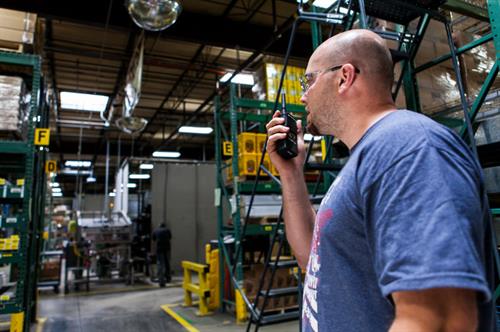Whether you're managing a construction crew, a warehouse team, or first responders, staying connected is non-negotiable. But which radio keeps your team talking—UHF or VHF? Choosing between Ultra High Frequency (UHF) and Very High Frequency (VHF) two-way radios isn’t just about price—it’s about performance, range, and reliability in the environments you work in every day.
This guide breaks it all down—clearly, practically, and without tech jargon—so you can make the right call for your operation.
1. What’s the Real Difference Between UHF and VHF?
Let’s start with the basics: both UHF and VHF refer to the frequency ranges that two-way radios operate on. But frequency changes everything—from how far your signal travels to how well it handles walls, trees, and concrete.
- VHF (Very High Frequency): Operates between 30–300 MHz. Best for wide-open spaces, fewer obstructions, and long-range outdoor use.
- UHF (Ultra High Frequency): Operates between 300–3000 MHz. Designed to punch through walls and metal—ideal for indoor use and complex environments.
Still unsure which one fits? Keep reading—we’ll show you how they stack up in real-world conditions.
2. Signal Range & Interference: Who Wins Where?
Here’s where most people make the wrong assumption: more range doesn’t always mean better. What matters is where you’ll be using the radio.
- VHF excels in rural and outdoor environments like farms, job sites, and open terrain. It can travel further, but it struggles with buildings and obstacles.
- UHF dominates indoors, especially in areas packed with steel, concrete, or multiple floors—think warehouses, schools, and hospitals.
So if you’re working in a remote area, VHF is likely your best friend. If your crew is under a roof or surrounded by walls—go UHF.
3. Battery Life & Efficiency
Because UHF radios operate at higher frequencies, they generally consume more power. That means:
- UHF radios may have shorter battery life in heavy-use scenarios.
- VHF radios are more efficient over long-range, low-obstruction use cases.
Still, modern radios from trusted brands have closed the gap considerably. Check out battery upgrades and accessories to keep your team powered up.
4. Industry-Specific Applications
Need a quick answer based on your use case? Here’s how different industries typically choose:
| Use Case | Best Frequency |
|---|---|
| Farming & Agriculture | VHF |
| Road Work & Construction (outdoors) | VHF |
| Warehousing, Factories, Indoor Sites | UHF |
| Healthcare, Hotels, Schools | UHF |
| Public Safety / Law Enforcement | UHF or Dual Band |
Not sure which frequency fits your environment? Ask an expert for a personalized recommendation.
5. Can UHF and VHF Radios Work Together?
Short answer: not unless your radios are dual-band capable. Most models are either UHF or VHF—not both. If your teams need to communicate across departments or locations that use different frequencies, a dual-band radio may be your best option.
6. So, Which Should You Choose?
There’s no one-size-fits-all answer—but there is a best-fit solution for your unique work environment.
- If you’re outdoors, spread out, or on the move: Go with VHF.
- If you’re inside, around buildings, or working across multiple floors: Choose UHF.
Still not sure? That’s what we’re here for. Our experts will help you choose, configure, and deploy the right two-way radio solution—without the guesswork.
Talk to a radio expert today or browse our collection of professional-grade two-way radios to get started.

